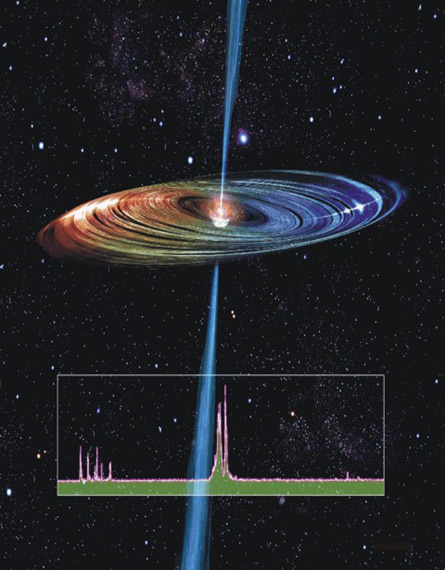BALTIMORE — Astronomers are honing measurements of a familiar cosmic parameter to shed new light on dark energy, the mysterious entity that’s accelerating the universe’s rate of expansion.

Known as the Hubble constant, this parameter indicates the current rate at which distant astronomical objects are receding, a number that can be used to estimate the age of the universe.
A new measuring method has reduced uncertainty in the constant’s value by more than half, to 4.8 percent, Adam Riess of the Space Telescope Science Institute in Baltimore reported May 5, at the beginning of a four-day Space Telescope symposium on dark energy. The method relies on laserlike radio emissions from water molecules that lie within the swirling disk of gas that surrounds a supermassive black hole at the heart of a relatively nearby galaxy, NGC 4258.
By combining the new measurement with detailed maps of the cosmic microwave background, the whisper of radiation leftover from the Big Bang, theorists can better determine whether dark energy is a constant or varies with time. So far, the preliminary study matches the early results of other studies, which suggest that dark energy has a constant density. The new measure of the Hubble constant, 74 kilometers per second per megaparsec (plus or minus 3.5), indicates that the universe is about 350 million years younger than the previous 13.7 billion–year estimate, Riess says.
“What’s really new is that the Hubble constant, with this precision level, has become competitive with the big three other methods for measuring dark energy,” Riess says.
Those methods use observations of supernovas, weak gravitational lensing and baryon acoustic oscillations, the echo of ripples in the density of matter that were created at the beginning of the universe. Supernovas examine the expansion history by measuring the brightness of distant exploding stars while weak lensing examines cosmic expansion by measuring the distribution of matter through its ability to distort the images of foreground objects.
Another researcher at the symposium, James Braatz of the National Radio Astronomy Observatory in Charlottesville, Va., says his team, using a similar method in more distant galaxies, hopes to pin down the Hubble constant to within 3 percent.
Whether or not dark energy varies with time has profound significance for the fate of the universe. For instance, if the stuff grows stronger with time — akin to stepping on the cosmic accelerator —the entire universe could end in a Big Rip, with every last atom torn asunder. A constant dark energy would end in a lonely universe, with every galaxy fleeing from each other so rapidly that a Milky Way astronomer some 30 billion years from now would look out and see nothing beyond our galaxy’s own stars. If dark energy drops to zero, the universe might end in a Big Crunch, with gravity’s tug creating a giant implosion.







